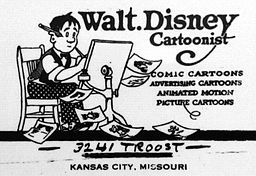I’ve witnessed some tumultuous times throughout my professional journey, which has mostly involved the industrial sector. The current global political climate, industry takeovers, mergers, and portfolio rationalization, as well as companies vying over a competitive talent pool of leaders, has resulted in a fair amount of distraction and turbulence across all industry functions, including Environmental, Health & Safety (EHS). Observing these circumstances, how does an organization proactively manage EHS compliance? Below, I share some thoughts I’ve gathered over the years.
Underpinning Is Always Compliance: Don’t Stray From the Core
EHS is fundamentally a compliance function. We enforce regulations to ensure people are safe and the environment is protected. My view is always that compliance is the “coveted core” above all else and serves as the backbone of the EHS profession. Protecting the people, assets, and reputation of the company you work for is paramount, and all programs, initiatives, and ancillary activities should have compliance as its underpinning.
Lean Into Change, Don’t Run From It
The common reactions to change are often anxiety, worry, and questions about “what will happen to me?” The perception is change is negative. This is amplified significantly when major change occurs in organizations that have operated to a “status quo” for many years. When firms undergo major changes, whether it be portfolio and/or people rationalization, mergers and acquisitions, functional transformations, and so on, it can be traumatic. Having experienced a fair amount of change over my career, the words of wisdom I can provide is lean into it, even though it can feel scary. The more you lean in, the more you become invested in shaping its outcome. It’s during these times that I’ve felt the highest levels of satisfaction, engagement, and learning. My spouse, a senior human resources executive, often says: “A comfort zone is like a plush lined coffin.” If this isn’t a good dose of reality, I don’t know what is! And in my experience, her words ring true. Feeling “uncomfortable” about change can be a positive influence that advances organizations and individuals to achieve new performance levels never thought possible. Experiencing change in the EHS function continues to challenge organizations to develop and implement robust management of change (MOC) strategies, which are critical to successfully managing compliance while encountering sustained, unsettled environments.
Embrace “Out-of-the-Box” Thinking: Be Creative and Try New Approaches
No matter your industry, be open to new ideas. Innovative approaches in the EHS space, which several companies have enthusiastically embraced, include predictive analytics, employment of digital technology, and outsourcing, just to name a few. Not only are these approaches transformational for the EHS function, they translate directly to providing enhanced, proactive compliance practices, especially during times of upheaval and uncertainty.
Let Your Fear of Failure Springboard You to Success
Don’t let the fear of failure curb your appetite to think creatively and innovatively. Many of the household names we admire today encountered early negative feedback that they “lacked something,” but this only led them to advance their own success. Some examples: Walt Disney was fired from the Kansas City Star because his editor felt he "lacked imagination and had no good ideas”; Oprah Winfrey was publicly fired from her first television job as a news anchor in Baltimore for getting "too emotionally invested in her stories”; and Thomas Edison's teachers told him he was "too stupid to learn anything." If these amazing, talented people had let that feedback hold them back, think how history might have been rewritten!
We live in and will continue to experience unprecedented times for change and disruption. Future generations of EHS leaders will, in my view, continue to “reinvent” the function to efficiently navigate these turbulent waters. Change catalyzes innovation, and I am very excited to see this play out and witness how these transformational strategies will enhance our ability to proactively attain and sustain EHS compliance both currently and in the future.
